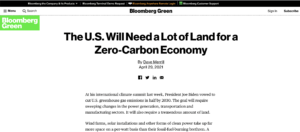The U.S. Will Need a Lot of Land for a Zero-Carbon Economy
By Dave Merrill
Excerpt: Wind farms, solar installations and other forms of clean power take up far more space on a per-watt basis than their fossil-fuel-burning brethren. A 200-megawatt wind farm, for instance, might require spreading turbines over 19 square miles (49 square kilometres). A natural-gas power plant with that same generating capacity could fit onto a single city block. …
To fulfill his vision of an emission-free grid by 2035, the U.S. needs to increase its carbon-free capacity by at least 150%. Expanding wind and solar by 10% annually until 2030 would require a chunk of land equal to the state of South Dakota, according to Bloomberg and Princeton University estimates.
By 2050, when Biden wants the entire economy to be carbon free, the U.S. will need up to four additional South Dakotas to develop enough clean power to run all the electric vehicles, factories and more.
No matter how you slice it, the U.S. will need to dedicate more land to producing power in an emissions-free future.
https://threadreaderapp.com/thread/1388169687222034433.html

1/ Biden’s goal to cut U.S. greenhouse gas emissions in half by 2030 will require sweeping changes in the power generation, transportation and manufacturing sectors.
It will also require a tremendous amount of land.
@merrill_dave reports: bloom.bg/3b7AzrV
2/ Right now, the U.S. energy sector uses about 81 million acres of land.
That estimate includes not only energy sources fueling the electric grid, but also transportation, home-heating and manufacturing.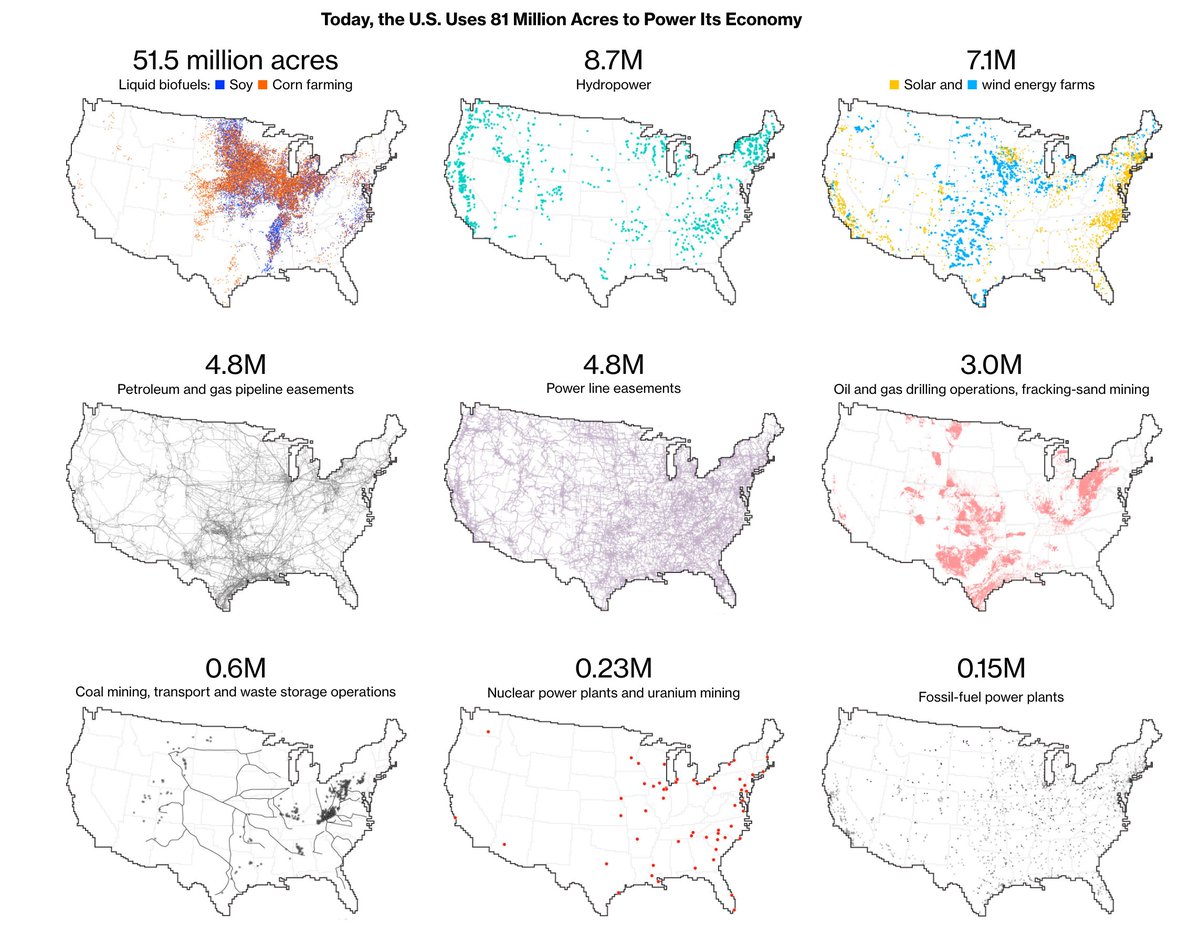
3/ Two-thirds of America’s total energy footprint is devoted to transportation fuels produced from agricultural crops, primarily corn grown for ethanol.
It requires more land than all other power sources combined but provides just 5% of the nation’s energy.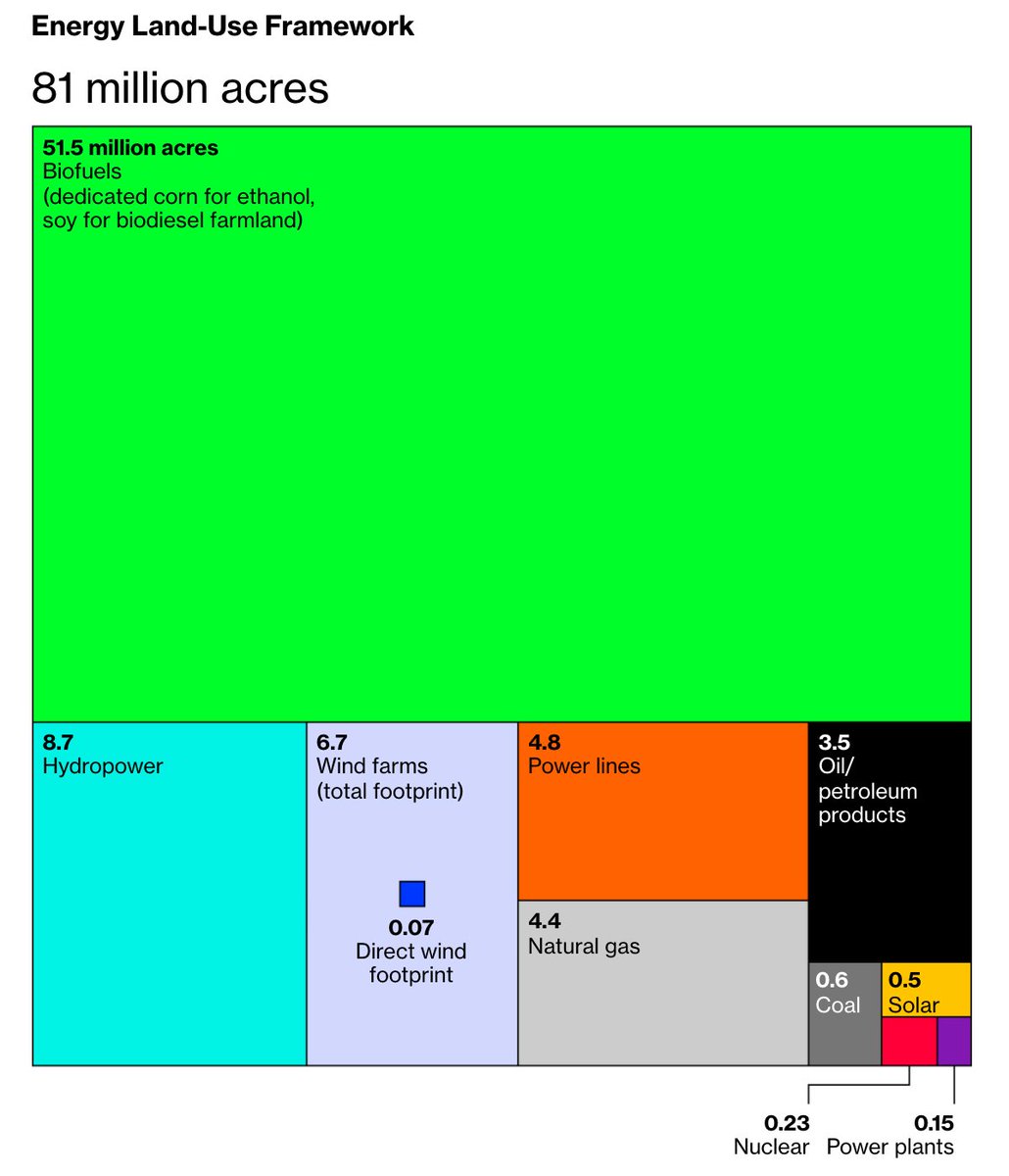
4/ Here’s how 81 million acres of energy acres lumped together looks on a U.S. map.
The current energy footprint is about the size of Iowa and Missouri combined, covering roughly 4% of the contiguous U.S. states.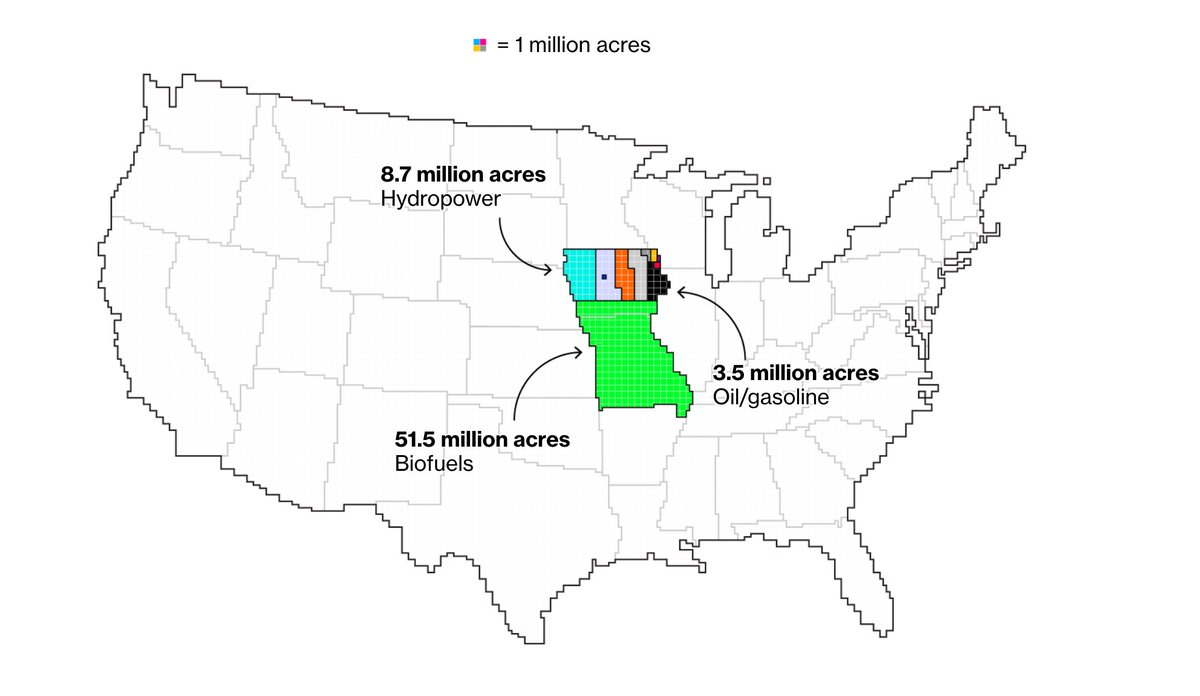
5/ @Princeton‘s Net-Zero America Project maps various pathways to reaching a carbon-free U.S. by 2050.
Each path has unique land-use challenges: bloom.bg/3b7AzrV
6/ The most land-intensive plan eliminates all fossil fuels and nuclear plants.
Wind and solar provide 98% of electric power by 2050. The U.S. energy footprint quadruples in size.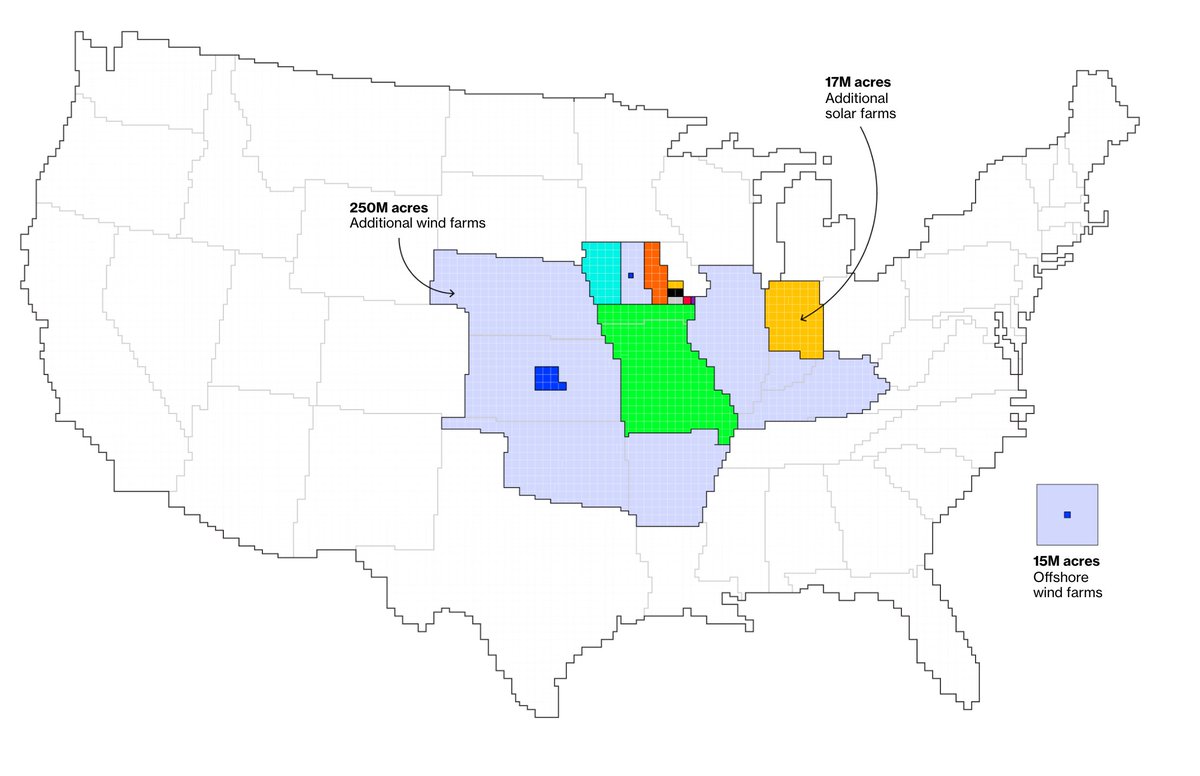
7/ Is there even enough open land to build 250 million acres of new wind farms?
The short answer is yes, according to estimates from the U.S. Department of Agriculture.
8/ Add together all the land in the contiguous U.S. used for pasture, range and cropland, and you’d get 1.05 billion acres (pictured in yellow).
The Princeton study also estimates that 11% of electric power could come from offshore wind farms by 2050.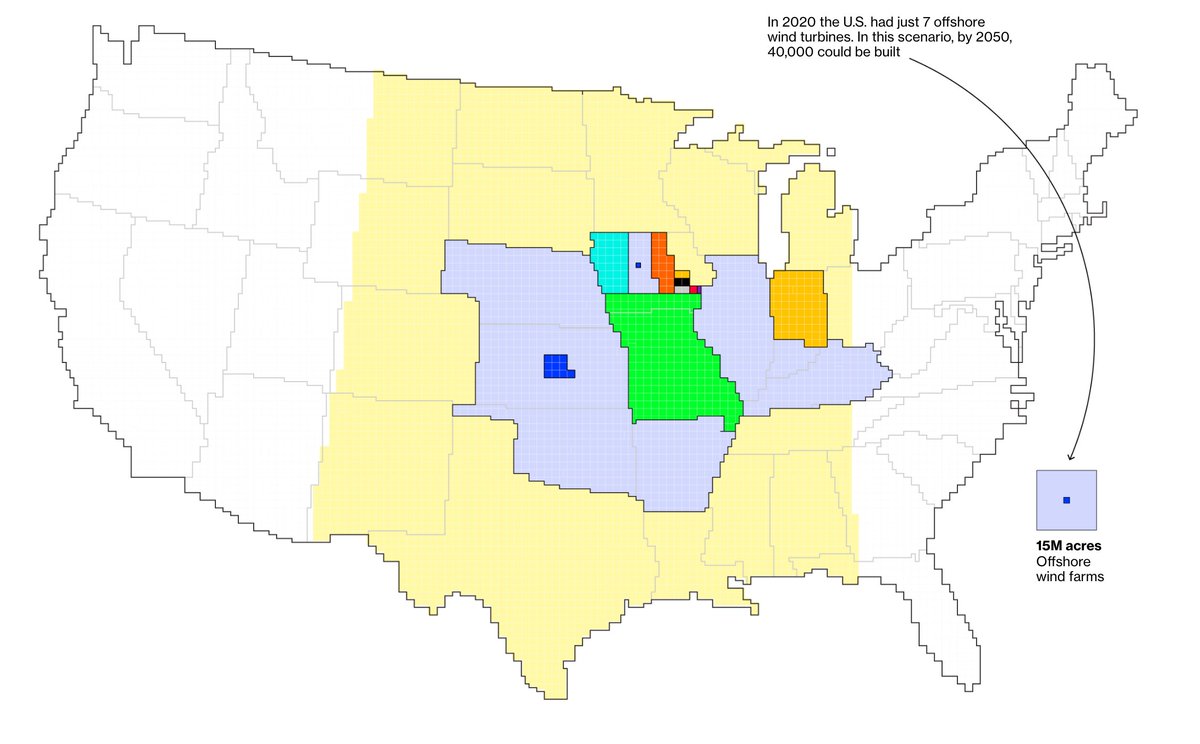
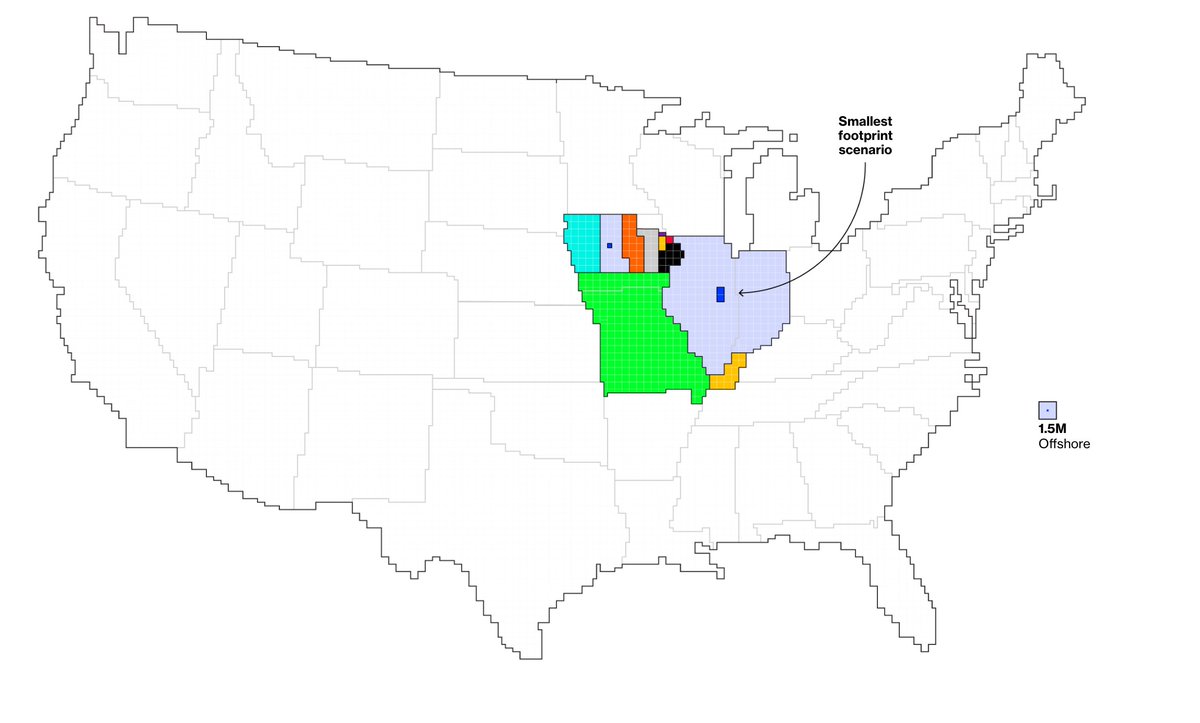
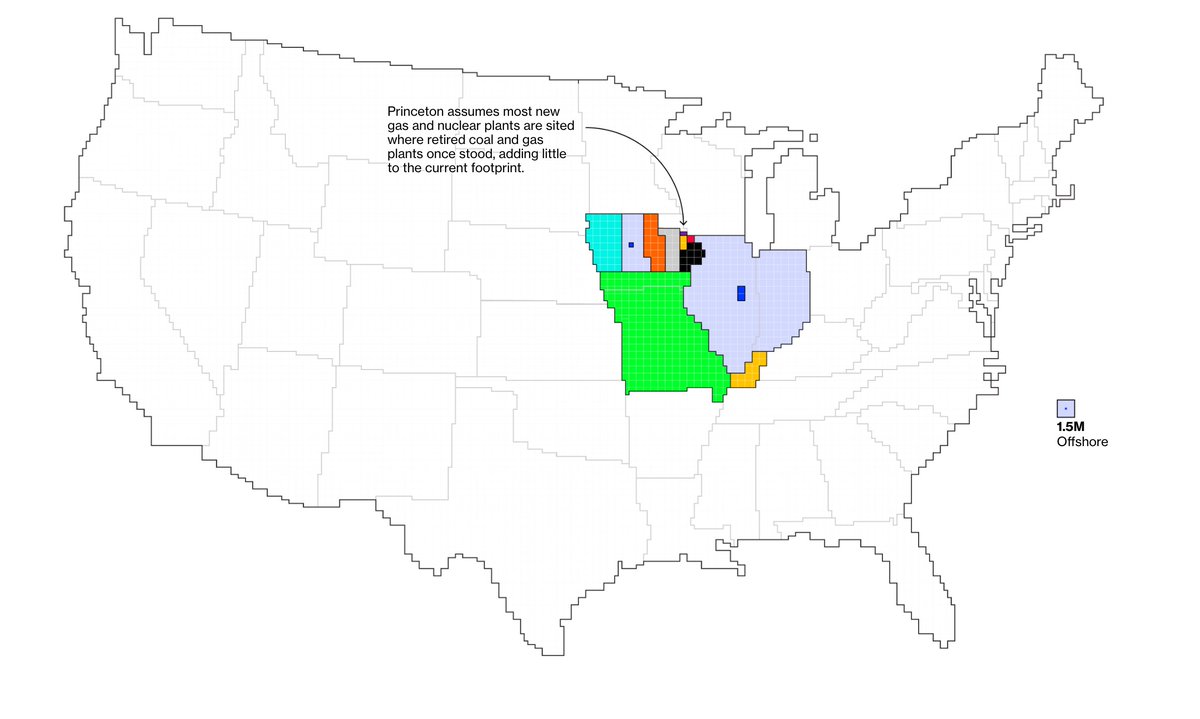
11/ To make 300 new natural-gas fired power plants emission-free, a network of carbon-capture pipelines and storage facilities would be built.
That would require land easements totaling 500,000 acres, about half the size of Rhode Island.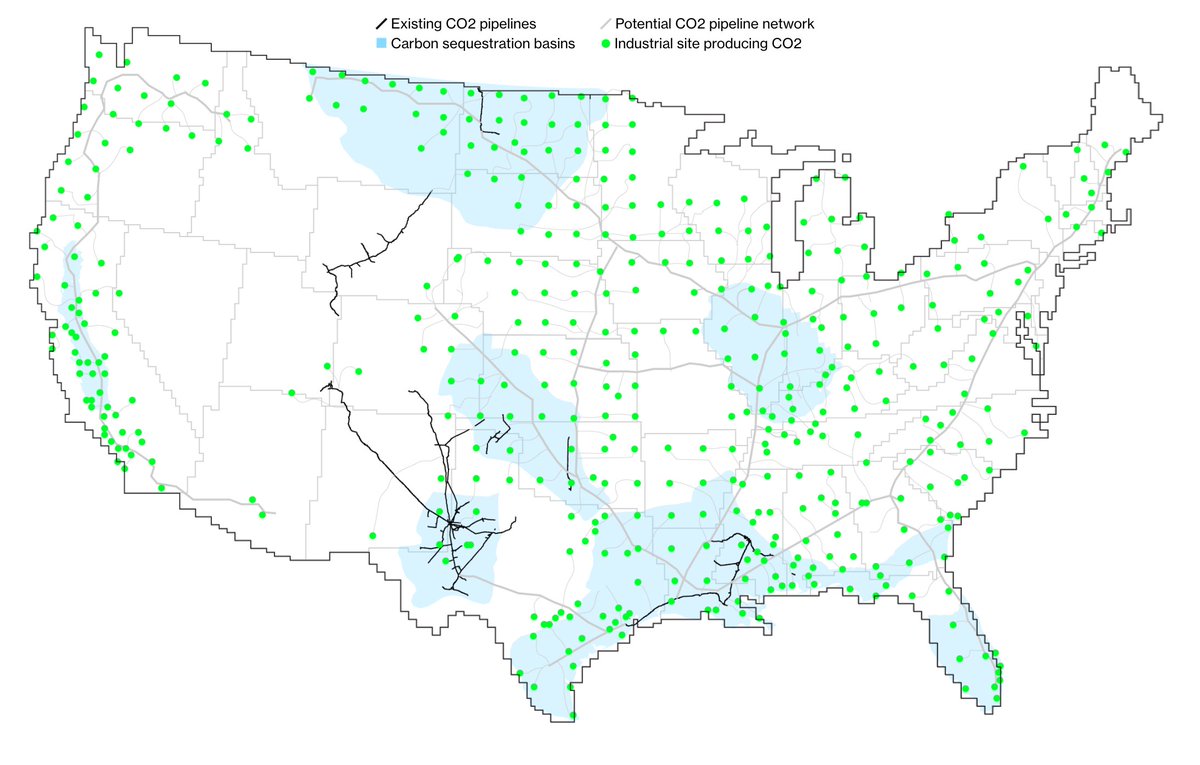
12/ The most difficult land-use challenge in any scenario may be building transmission lines.
In 2011, Obama created the Rapid Response Team for Transmission to speed the permitting of five Western transmission line projects. Only one is under construction so far.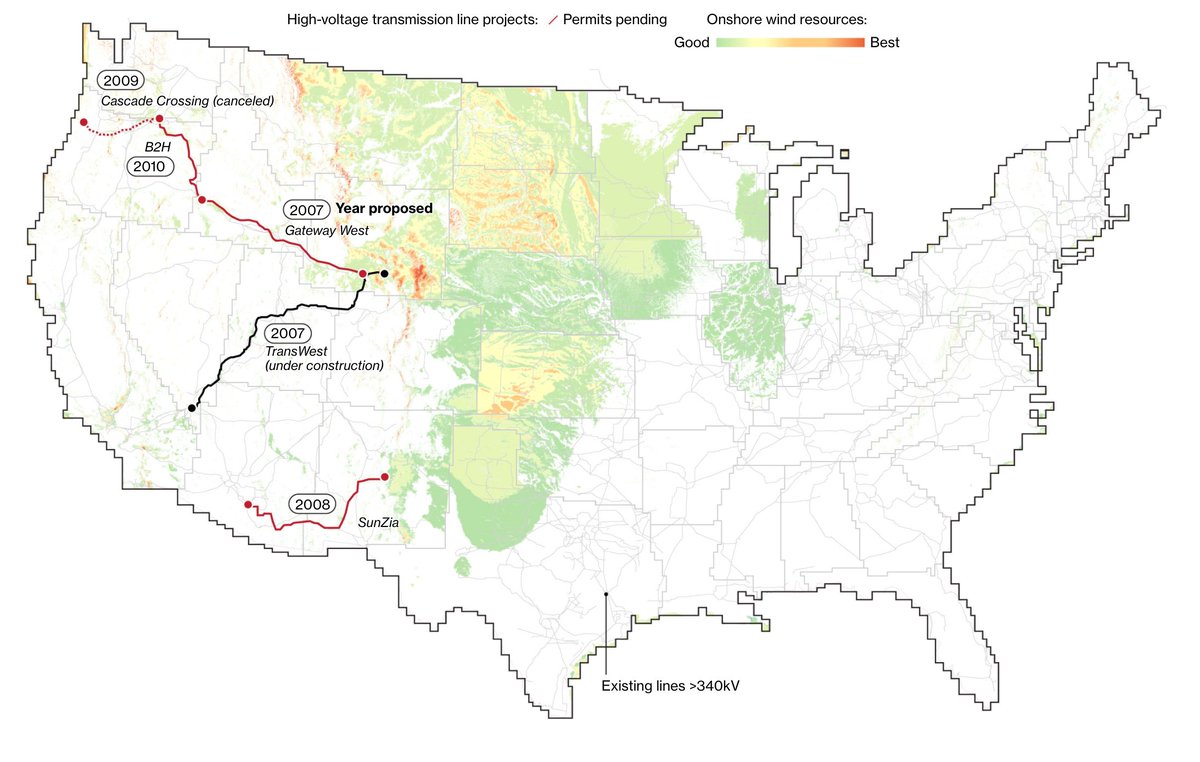
Exhaust a lot of land to accommodate renewables—more than is currently used for fossil fuels? No nuclear? What sustainability? (Expect us to also be dependent on foreign nations on rare earth minerals too.)
Reimagining the economy like this is ruinous.
CC @ShellenbergerMD https://t.co/9v0rvo1fbK
— Gabriella Hoffman (@Gabby_Hoffman) May 2, 2021

